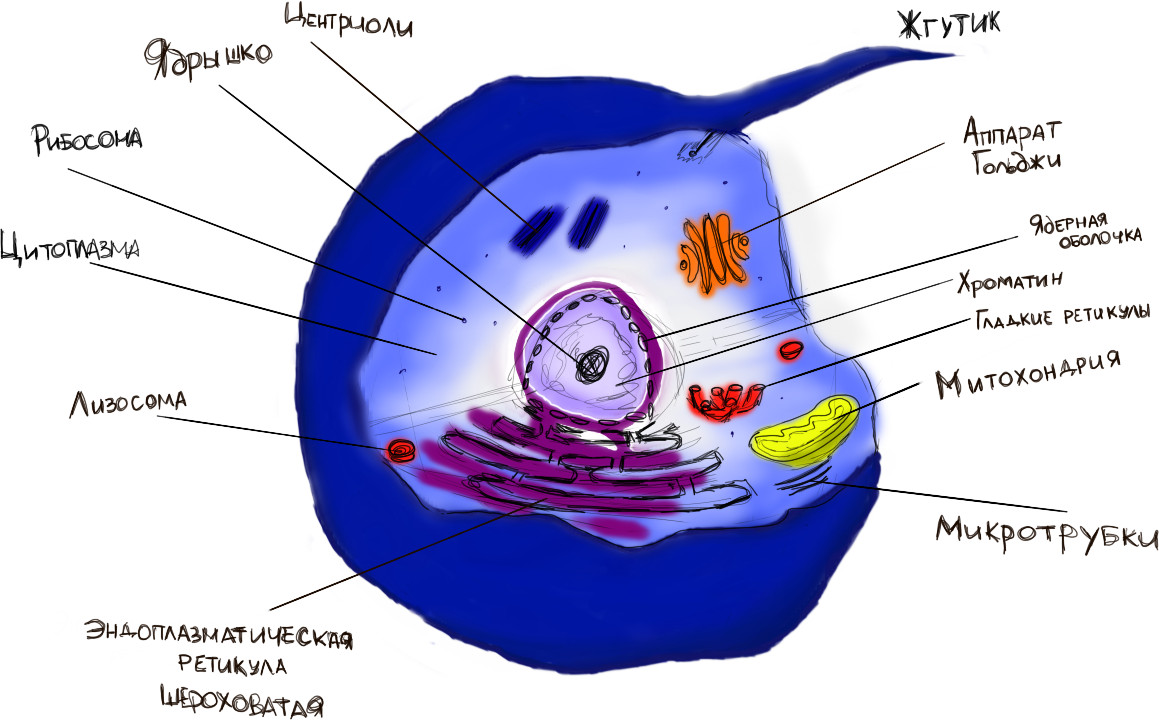Prokaryotic cells
Prokaryote cells are the oldest known form of life. Have been found in fossilized fossils up to three and a half billion years old. These cells are inherent in archaea (archaobacteria) and bacteria (eubacteria).
Prokaryotic cells are generally smaller than eukaryotic cells and structurally simpler. Medium size prokaryotic cells from one to ten micrometers. They contain a cytoplasm with a large number of ribosomes, a single DNA chain and a plasma membrane surrounding them. The genetic material is usually twisted, attached to the plasma membrane and concentrated in the nucleotide, which in turn is not separated a membrane from the surrounding substance.
In addition to chromosomes, the cytoplasm of many bacteria contains ring molecules of DNA sections called plasmids containing from two to 30 genes. With the exception of mycoplasmas, prokaryotes contain a cell wall, which is produced in the secret of the same cell.
Eukaryotic cells
The eukaryotic cell is divided into two parts: the nucleus is an organelle containing genetic material and the cytoplasm, consisting of cytosol and organelles. Cytosol is an aqueous solution of salts, sugars, amino acids, proteins, fatty acids, nucleotides, and other substances. Most biological reactions occur in the cytoplasm thanks to the protein catalysts of these reactions.
In the cytosol there are organelles - special structures that function as small organs, performing specific cell functions. Also, the cytoplasm contains a network of fibers and protein filaments that provide intracellular support, forming a cytoskeleton. With some exceptions, all eukaryotic cells contain the following organelles: nucleus, reticules, endoplasm, ribosomes, Golgi apparatus, mitochondria and vesicles. Eukaryotic cells are larger than prokaryotes and their size is usually from 5 to 100 µm in diameter.

Features of plant cells
In addition to these cells, it should be noted two special structures that distinguish plant cells from animals - this is the cell wall and plastids. A cell wall of cellulose surrounds the plasma membrane and protects the cage. Plastid, for example, chloroplast, is a membrane organelle containing the green pigment chlorophyll, whose function is the conversion of solar energy for the synthesis of carbohydrates and other organic molecules.
Another difference is the large vacuoles in plant cells, which in animal cells are either small or not at all. In animal cells there is a pair of centrioles that are located next to the nucleus
Comparison of prokaryotes and eukaryotes
| Structure | Prokaryotes | Eukaryotes | |
| Animal cage | Plant cell | ||
| Plasma membrane | Yes | Yes | Yes |
| Cell Wall | Yes | No | Yes |
| Nucleus | No | Yes | Yes |
| Chromosomes | Ring strand of DNA | A lot | Many |
| Ribosomes | Yes (small) | Yes (large) | Yes (large) |
| Endoplasmic reticulum | No | Yes | Yes |
| Golgi apparatus | No | Yes | Yes |
| Lysosomes | No | Yes | Yes |
| Vacuoles | None | Small or missing | Yes |
| Mitochondria | No | Yes | Yes |
| Chloroplasts | No | No | Yes |
| Cytoskeleton | No | Yes | Yes |
| Table 1. Comparison of prokaryotic and eukaryotic cells | |||

